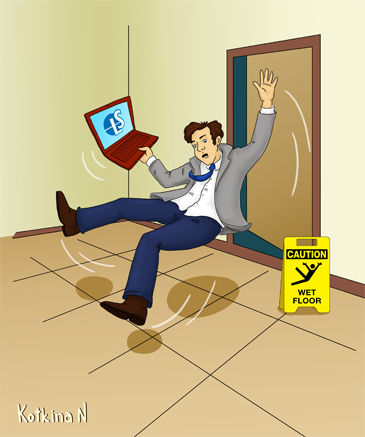Business & Startups
Safety in the workplace: avoid tripping hazards now
 Even if you rarely think about it, safety in the workplace is crucial.
Even if you rarely think about it, safety in the workplace is crucial.
When considering office jobs, most people do not immediately associate them with potential hazards. However, this false sense of security is precisely what often leads to accidents in the office environment. Even hazardous substances can be present and may impact employees’ health if not stored correctly. In fact, several thousand employees are injured in office settings every year—many of these incidents could easily be prevented.
False Sense of Security: Hidden Risks in the Office
A false sense of security in the office often leads to overlooked dangers. For example, sharp corners and edges are rarely perceived as threats until an accident occurs. Slippery thresholds are another common hazard, especially when made from materials that become slick on rainy days. Fortunately, these areas can be made safer with appropriate non-slip coverings.
Improperly laid cables are also a frequent tripping hazard. This issue can be resolved quickly by securing cables in wall-mounted cable ducts, which not only improve safety but also contribute to a tidier workspace. Additionally, electrical devices pose risks if they are not functioning properly or if there are exposed wires. Such issues can result in electric shocks or, in the worst case, fires caused by defective equipment.
Hazardous Substances in the Office
A surprising variety of hazardous substances can be found in offices, ranging from adhesives to toners and ink cartridges. While these materials are generally safe in small quantities, storing them in bulk increases the risk. Offices often purchase large quantities of adhesives or correction fluids, which must be stored properly to prevent accidents. The same applies to toner and ink cartridges, where correct disposal is essential.
Refilling toners and cartridges is a common cost-saving measure, but this task should be left to professionals. Although the Federal Institute for Risk Assessment does not classify toner substances as dangerous, they are not entirely harmless. It is important to always follow the hazard warnings on office supplies, as these labels provide crucial information on safe handling and disposal.
Keep Escape Routes Clear
Whether in the event of a fire or the release of hazardous substances, it is vital that office premises can be evacuated quickly during an emergency. For this reason, escape routes and emergency exits should always be clearly marked, and emergency drills should be conducted at least once a year. It is advisable to appoint several individuals as emergency contacts, who can be easily identified by high-visibility vests.
If you are considering purchasing high-visibility vests or protective clothing, you will find suitable products at gaerner. For cleaning staff, who frequently handle hazardous cleaning agents, protective gloves are essential and are also available there.
By remaining vigilant and taking simple precautions, you can significantly reduce the risk of accidents in the office. Prioritizing safety not only protects employees but also creates a more productive and pleasant working environment.
about the author Urs Langmeier
Founder and CEO of Langmeier Software
I don't want to complicate anything. I don't want to develop the ultimate business software. I don't want to be listed in a top technology list. Because that's not what business applications are about. It's about making sure your data is seamlessly protected. And it's about making sure everything runs smoothly while you retain full control and can focus on growing your business. Simplicity and reliability are my guiding principles and inspire me every day.
Related articles
Which type of backup is the best choice for my data?This is how important data backup is in real lifeThe advantages and disadvantages of the different Windows file systems
Post a comment here...
This article covers the topics:
Safety in the workplace
Avoid tripping hazards now
Avoid tripping hazards Safety
Hazardous substances in the office



